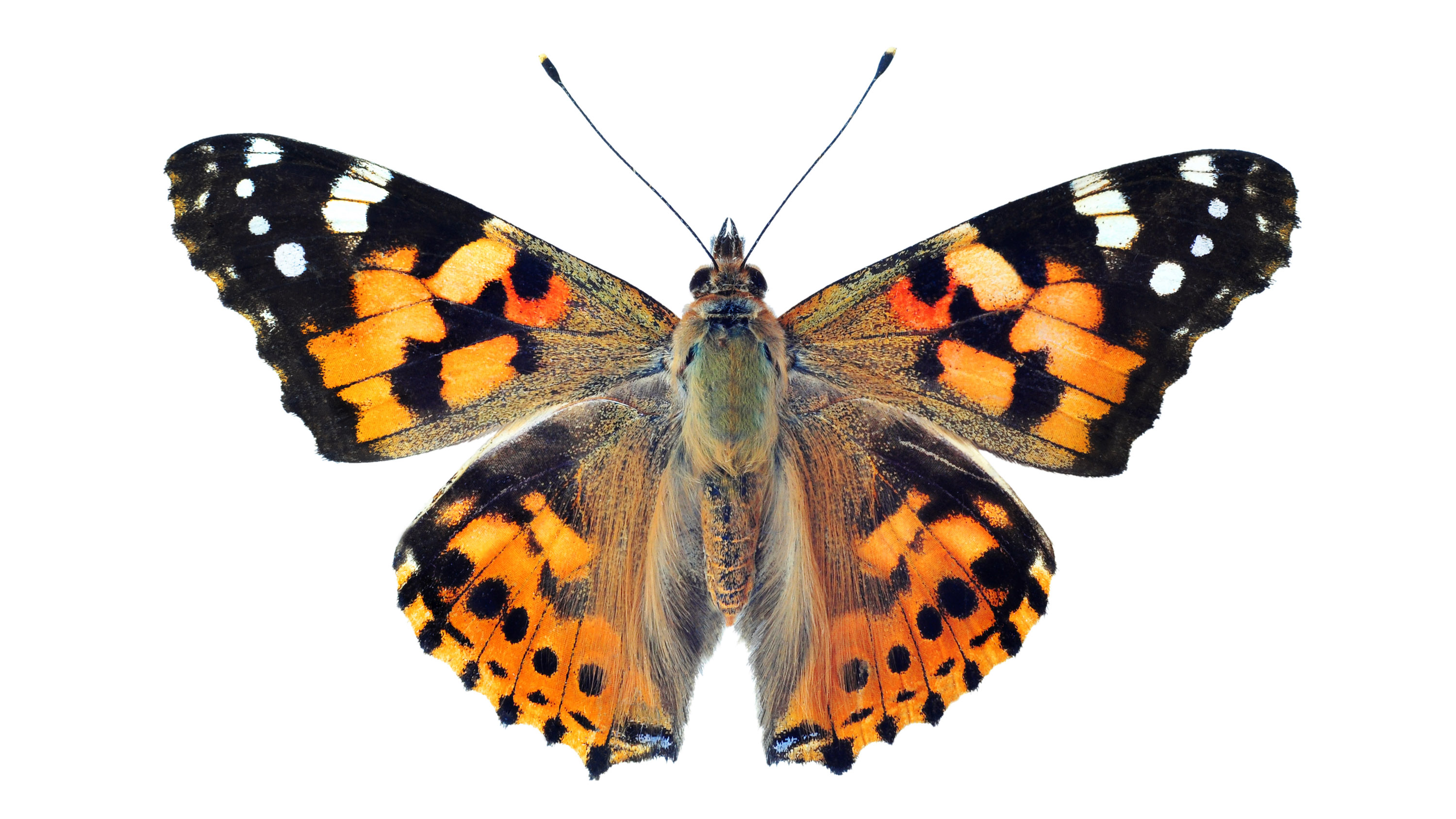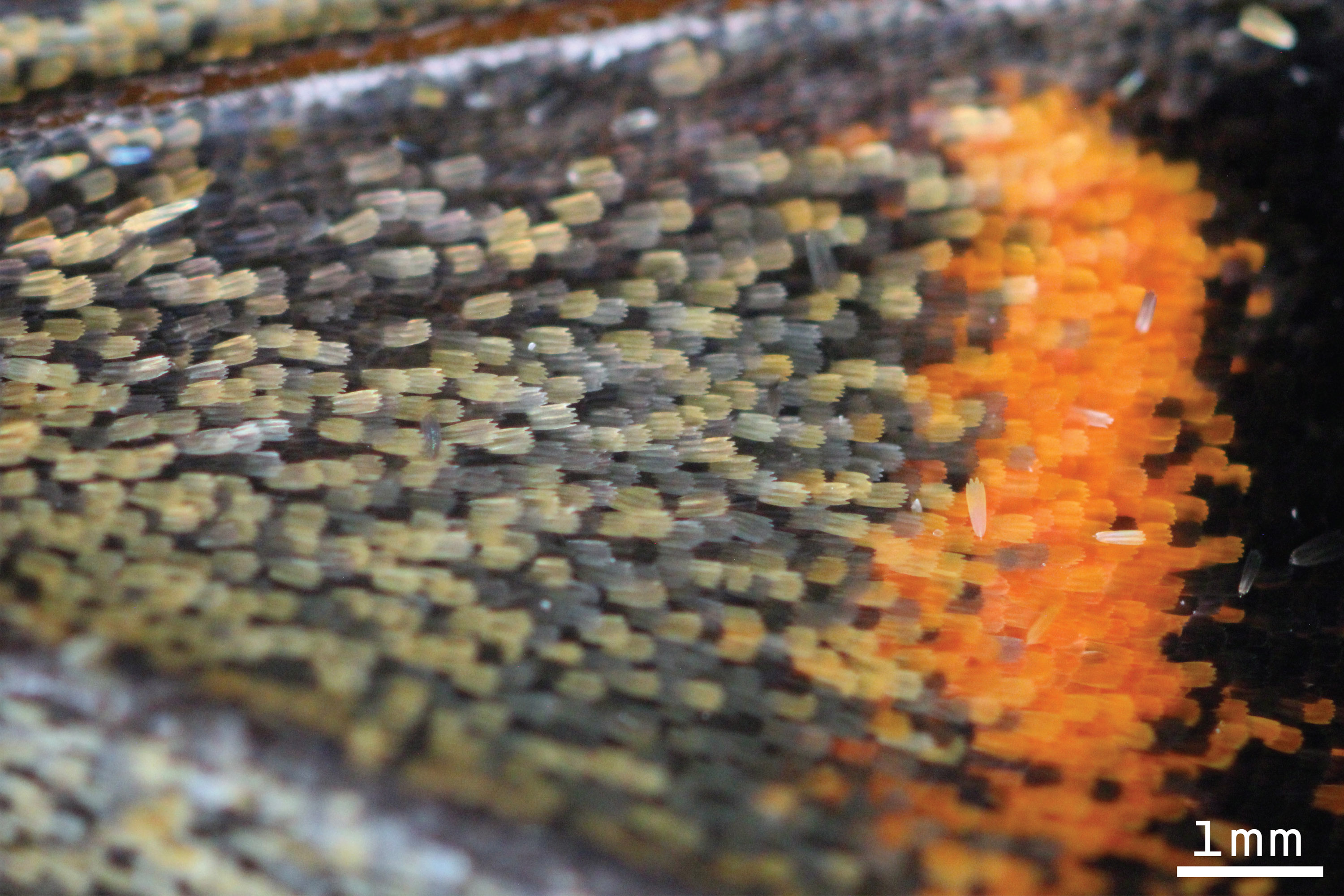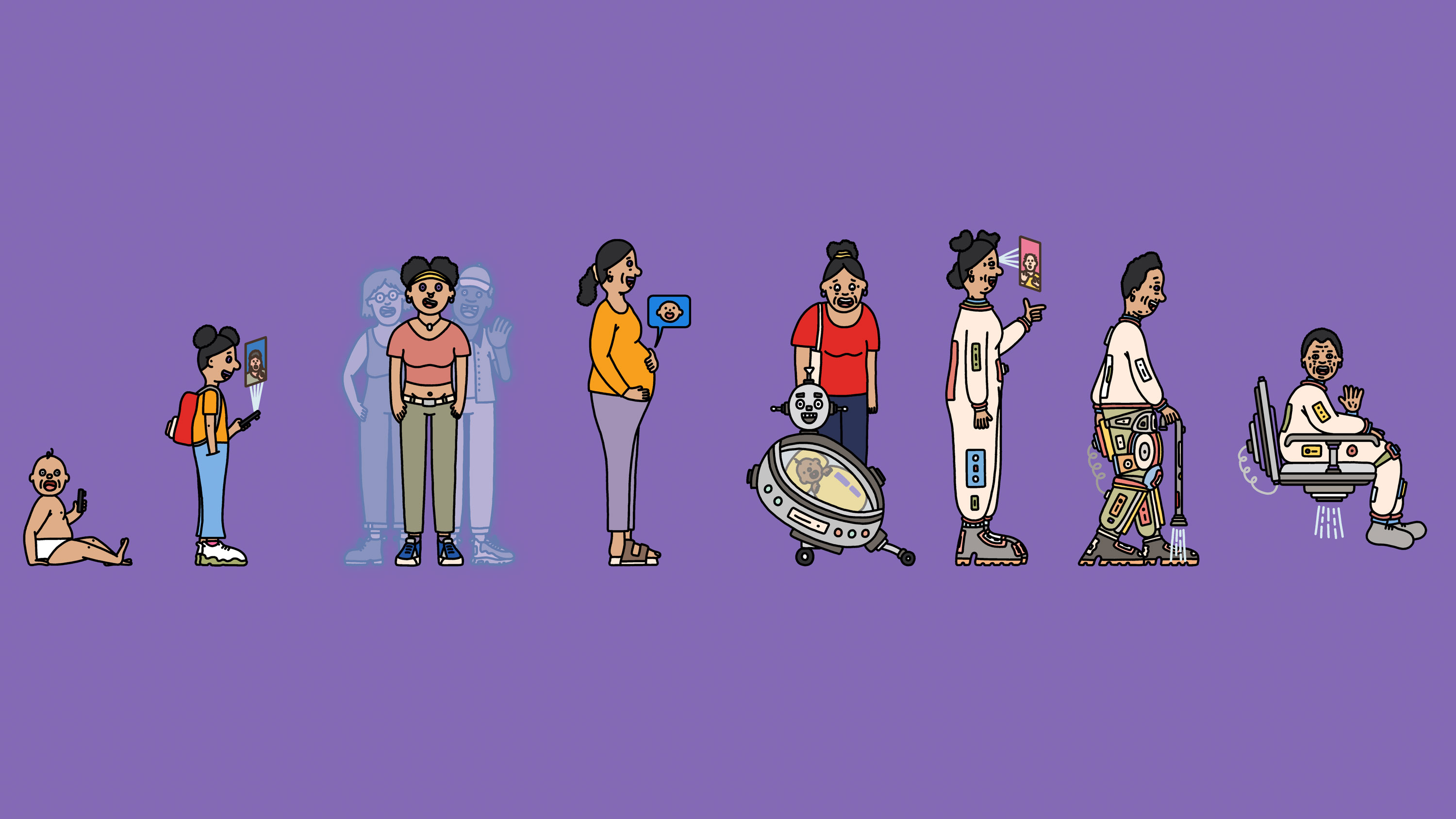How a butterfly’s scales are born
New findings about this aspect of metamorphosis could help engineers design materials for managing light and heat.

A butterfly’s wing is covered in hundreds of thousands of tiny scales, like miniature shingles on a paper-thin roof. A single scale is as small as a speck of dust yet surprisingly complex, with a corrugated surface that helps wick away water, manage heat, and reflect light to give a butterfly its signature shimmer.
MIT researchers have now captured the moments when an individual scale begins to develop this ridged pattern. The researchers used advanced imaging techniques to observe the microscopic features on a developing wing as a painted lady butterfly emerged in its chrysalis.

Using a special microscopic technique to peer through an opening they created in the chrysalis itself, the team continuously imaged individual scales as they grew out from the wing’s membrane during a crucial time window in the butterfly’s development. These images reveal for the first time how a scale’s initially smooth surface begins to wrinkle to form microscopic, parallel undulations like the ridges in corduroy. The ripple-like structures eventually grow into more finely patterned ridges, which make many functions of the adult wing scales possible.
The transition to a corrugated surface is likely a result of “buckling”—a mechanical process by which a material bows in on itself as it is subjected to compressive forces or constrained within a confined space. In this case, as they confirmed with the help of a theoretical model describing the general mechanics of buckling, actin bundles—long filaments that run under a growing membrane and support the scale as it takes shape—pin the membrane in place like ropes around an inflating hot-air balloon.
“Buckling is an instability, something that we usually don’t want to happen as engineers,” says Mathias Kolle, an associate professor of mechanical engineering and coauthor of a study on the work. “But in this context, the organism uses buckling to initiate the growth of these intricate, functional structures.”
The team is working to visualize more stages of butterfly wing growth that could inspire advanced functional materials in the future.
“These materials would exhibit tailored optical, thermal, chemical, and mechanical properties for textiles, building surfaces, vehicles—really, for generally any surface that needs to exhibit characteristics that depend on its micro- and nanoscale structure,” Kolle says.
“We want to learn from nature, not only how these materials function, but also how they’re formed,” says Anthony McDougal, SM ’15, PhD ’22, an MIT postdoc and another coauthor. “If you want to, for instance, make a wrinkled surface, which is useful for a variety of applications, this gives you two really easy knobs to tune to tailor how those surfaces are wrinkled. You could either change the spacing of where that material is pinned, or you could change the amount of material that you grow between the pinned sections. And we saw that the butterfly is using both of these strategies.”
Keep Reading
Most Popular

Happy birthday, baby! What the future holds for those born today
An intelligent digital agent could be a companion for life—and other predictions for the next 125 years.

This researcher wants to replace your brain, little by little
The US government just hired a researcher who thinks we can beat aging with fresh cloned bodies and brain updates.

Here’s how people are actually using AI
Something peculiar and slightly unexpected has happened: people have started forming relationships with AI systems.
Stay connected
Get the latest updates from
MIT Technology Review
Discover special offers, top stories, upcoming events, and more.
